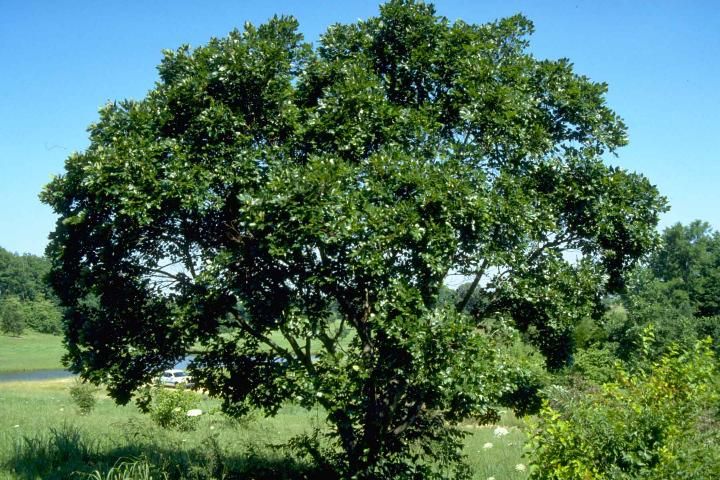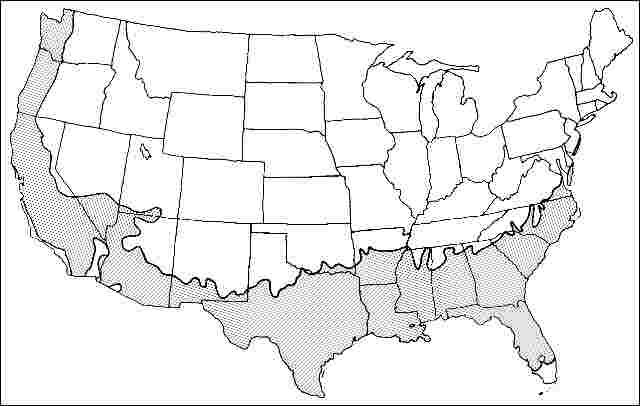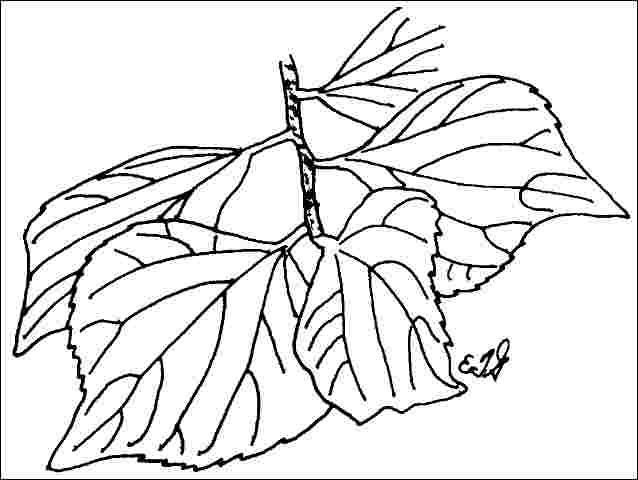Introduction
European hackberry is a deciduous tree, 40 to 70 feet tall by 40 to 50 feet wide, with smooth, light grey, somewhat warty bark and a wide, broad, rounded canopy, making it a good potential shade tree. The 6-inch-long, sharply toothed leaves are dark grey/green throughout the year fading to a pale yellow before falling in autumn. Tiny, round, dark purple fruits hang in short clusters and are extremely popular with birds and other wildlife. But they are hard and people can roll and slip on them when they drop onto sidewalks and other hard surfaces.

Credit: Ed Gilman, UF/IFAS
General Information
Scientific name: Celtis australis
Pronunciation: SELL-tiss oss-TRAY-liss
Common name(s): Mediterranean hackberry, European hackberry
Family: Ulmaceae
USDA hardiness zones: 6B through 9B (Figure 2)
Origin: not native to North America
Invasive potential: not assessed/incomplete assessment
Uses: tree lawn > 6 ft wide; street without sidewalk; reclamation; shade; bonsai; highway median

Description
Height: 40 to 70 feet
Spread: 40 to 50 feet
Crown uniformity: irregular
Crown shape: round, spreading
Crown density: moderate
Growth rate: fast
Texture: medium
Foliage
Leaf arrangement: alternate (Figure 3)
Leaf type: simple
Leaf margin: serrate
Leaf shape: ovate
Leaf venation: pinnate, bowed, reticulate
Leaf type and persistence: deciduous
Leaf blade length: 4 to 8 inches
Leaf color: green
Fall color: yellow
Fall characteristic: not showy

Flower
Flower color: unknown
Flower characteristics: not showy
Fruit
Fruit shape: round
Fruit length: less than 0.5 inch
Fruit covering: fleshy
Fruit color: purple
Fruit characteristics: attracts squirrels/mammals; not showy; fruit/leaves a litter problem
Trunk and Branches
Trunk/bark/branches: branches droop; showy; typically one trunk; thorns
Pruning requirement: needed for strong structure
Breakage: susceptible to breakage
Current year twig color: green, brown
Current year twig thickness: thin
Wood specific gravity: unknown
Culture
Light requirement: full sun
Soil tolerances: clay; sand; loam; slightly alkaline; acidic; well-drained
Drought tolerance: high
Aerosol salt tolerance: moderate
Other
Roots: can form large surface roots
Winter interest: yes
Outstanding tree: no
Ozone sensitivity: unknown
Verticillium wilt susceptibility: unknown
Pest resistance: resistant to pests/diseases
Use and Management
Trees benefit from some pruning in the nursery and landscape. Often, there are only a small number of large-diameter branches in the crown, and these can develop embedded bark next to the trunk if they are allowed to become very large relative to the size of the trunk. This problem can be avoided by pruning back these branches to slow their growth so more, smaller-diameter dominant branches develop in the crown. Be sure that branches arise from the trunk at a wide angle and slow the growth of these branches by pruning. This will help the tree develop a strong branch structure since hackberry appears to develop embedded bark on major branches more often than some other trees. But large-diameter surface roots can form (particularly in poorly-drained soil), raising sidewalks and making mowing grass difficult. Locate the tree 8-feet or more from a sidewalk or street to help keep them intact.
Hackberry has a reputation for internal trunk rot, particularly following mechanical injury to the trunk. Locate the tree so it will not be injured by mowing equipment or other vehicles, and keep grass away from the base of the trunk so string trimmers will not cause injury.
European hackberry will display quickest growth in full sun on moist soil but will tolerate poorer soil conditions very well with slower growth. It is moderately drought-tolerant.
Propagation is by seed, layering, and cuttings.
Pests and Diseases
No pests or diseases are of major concern but twigs may occasionally die from the parasitic fungus which causes witches' broom. Affected wood should simply be removed when noticed. It is not often seen with the leaf gall which is so common on Celtis occidentalis.